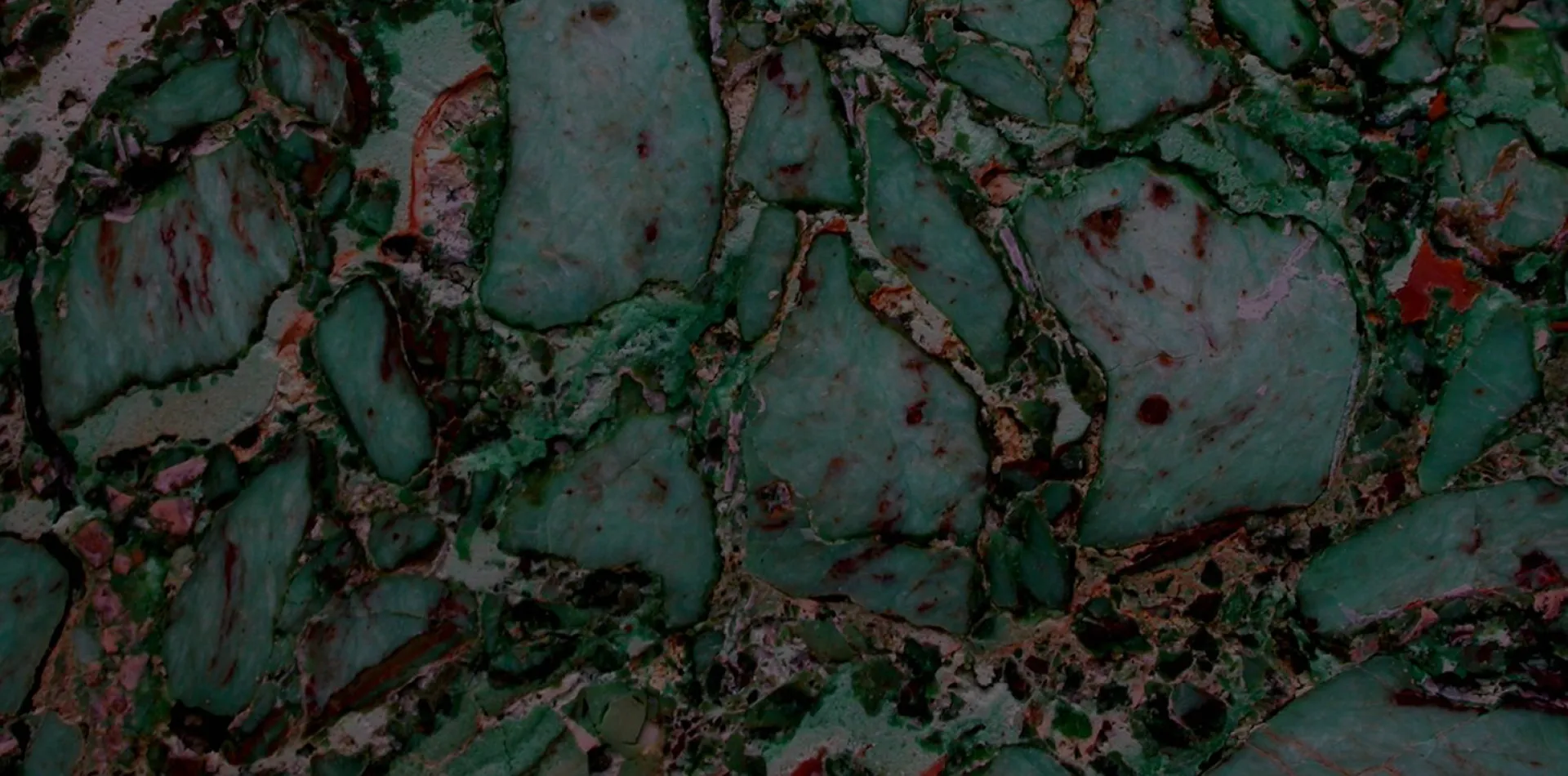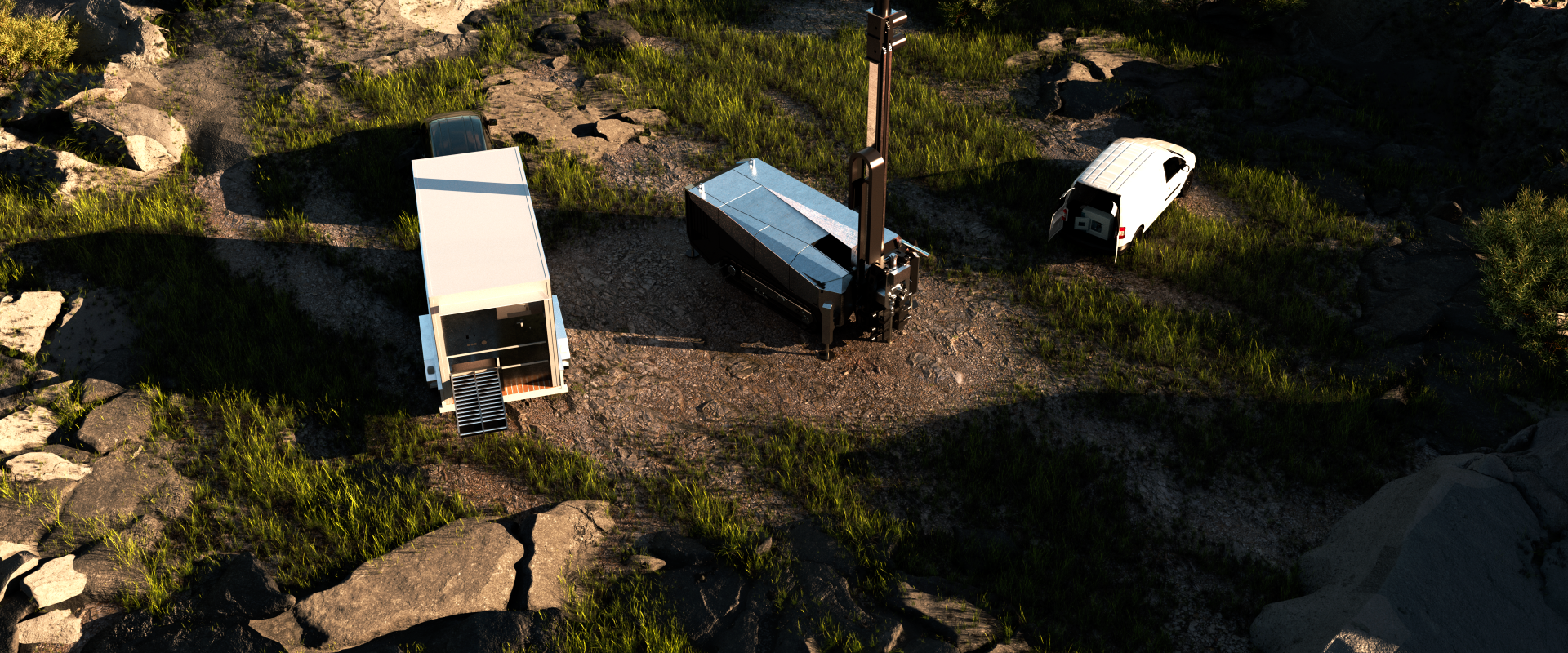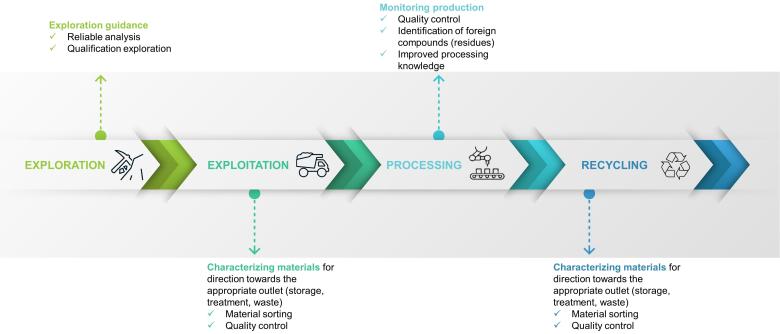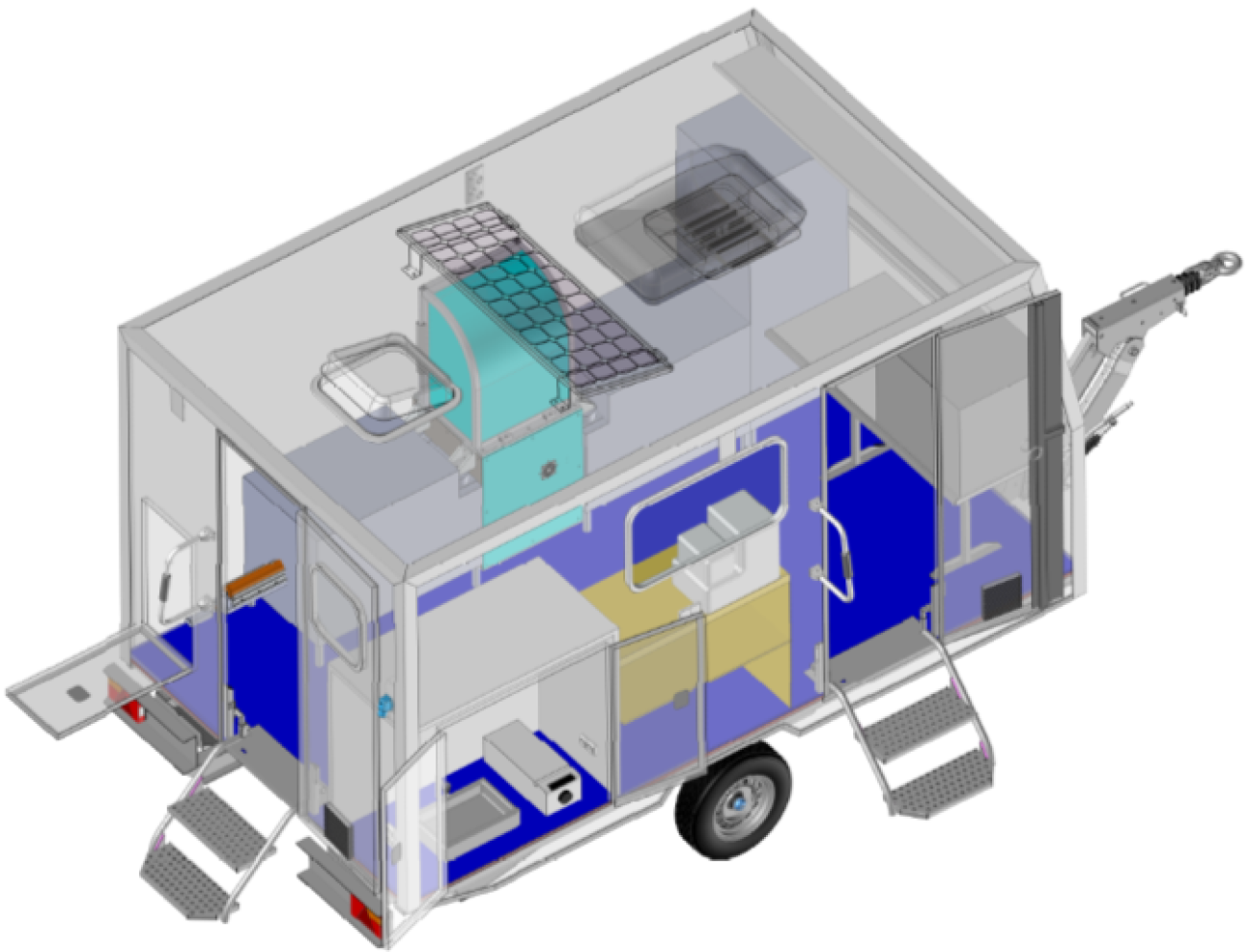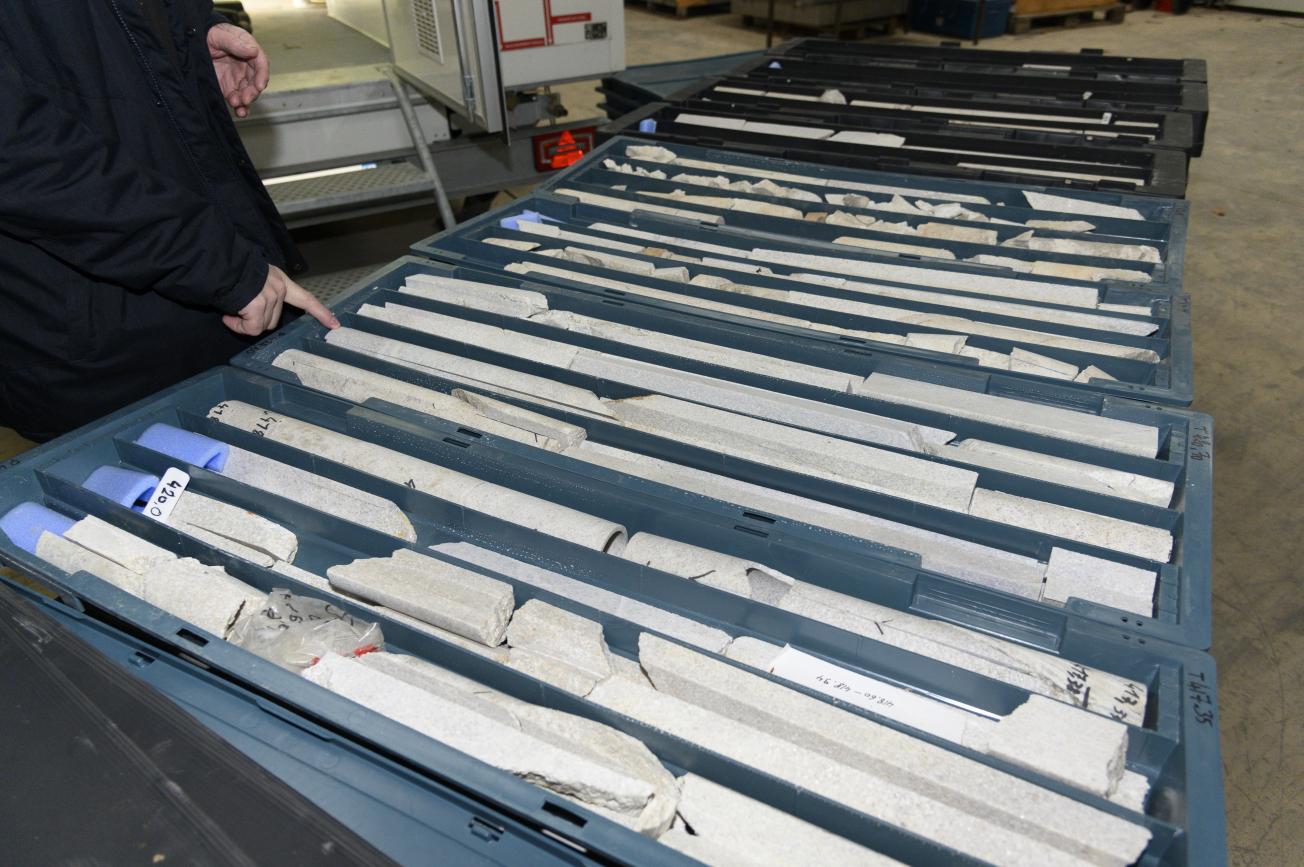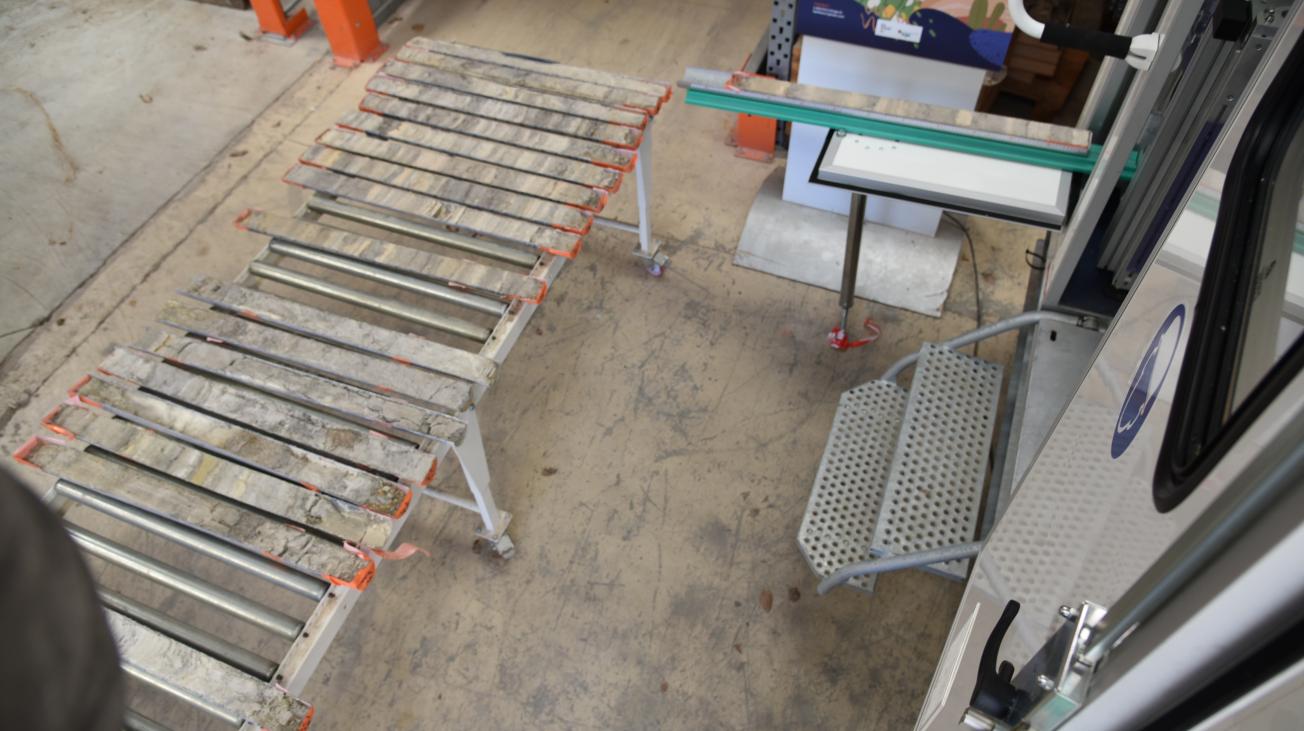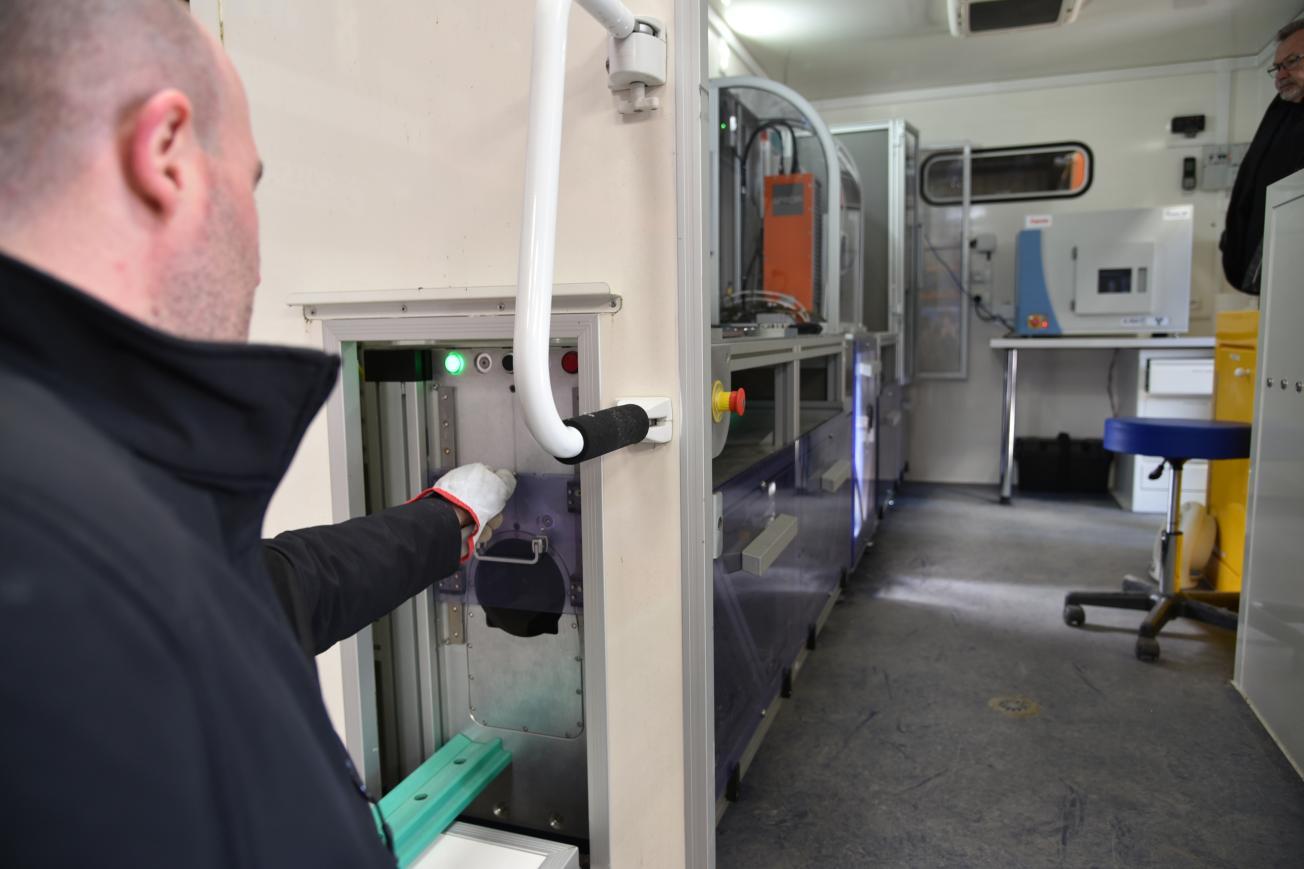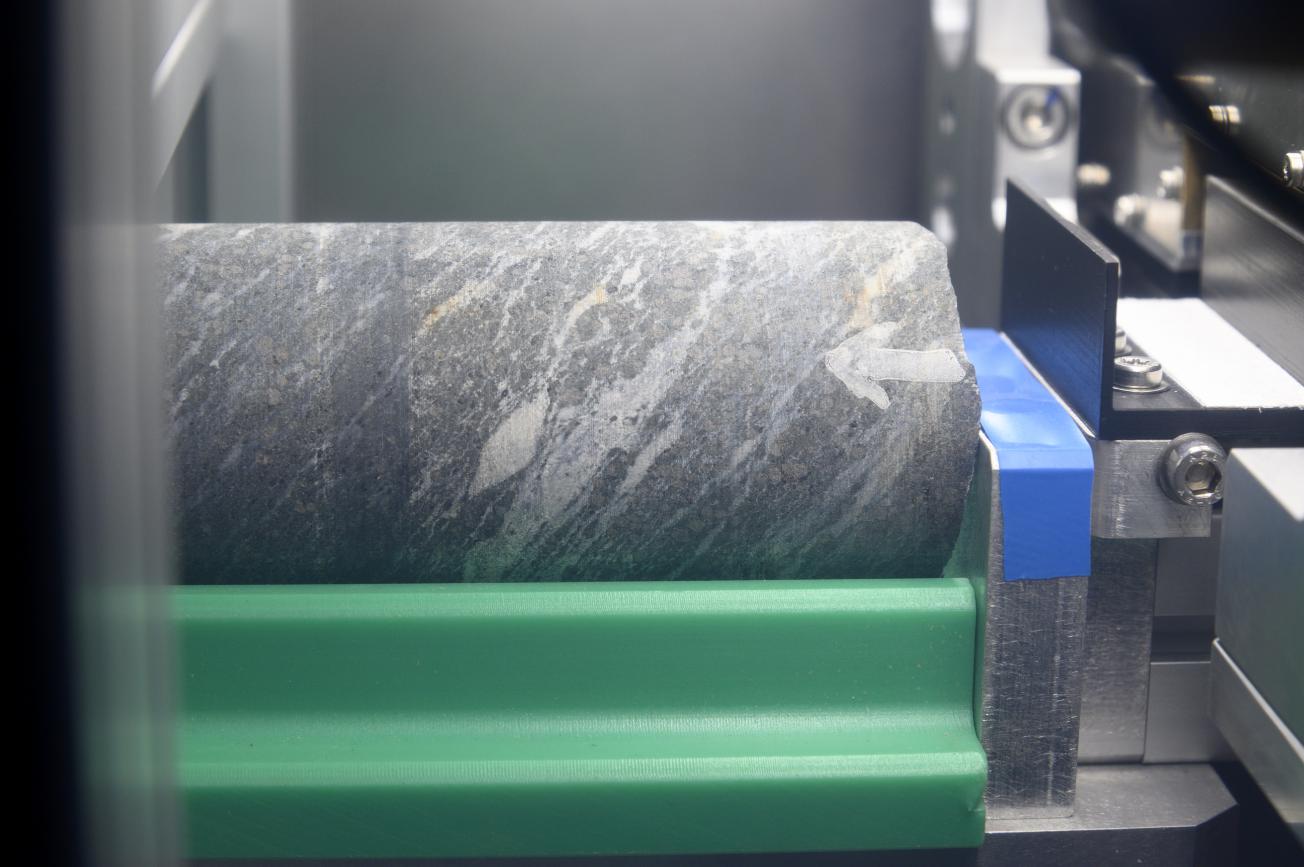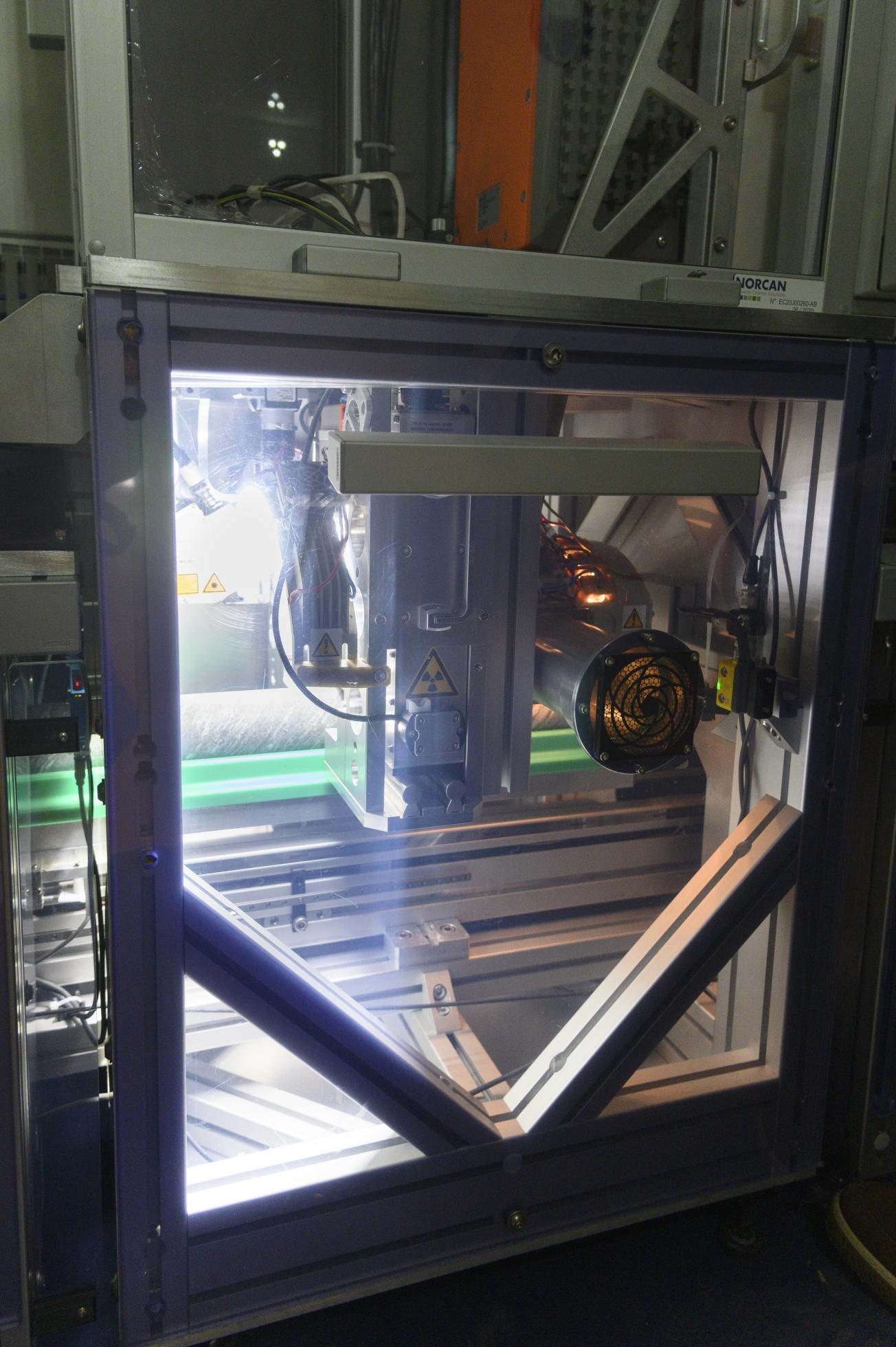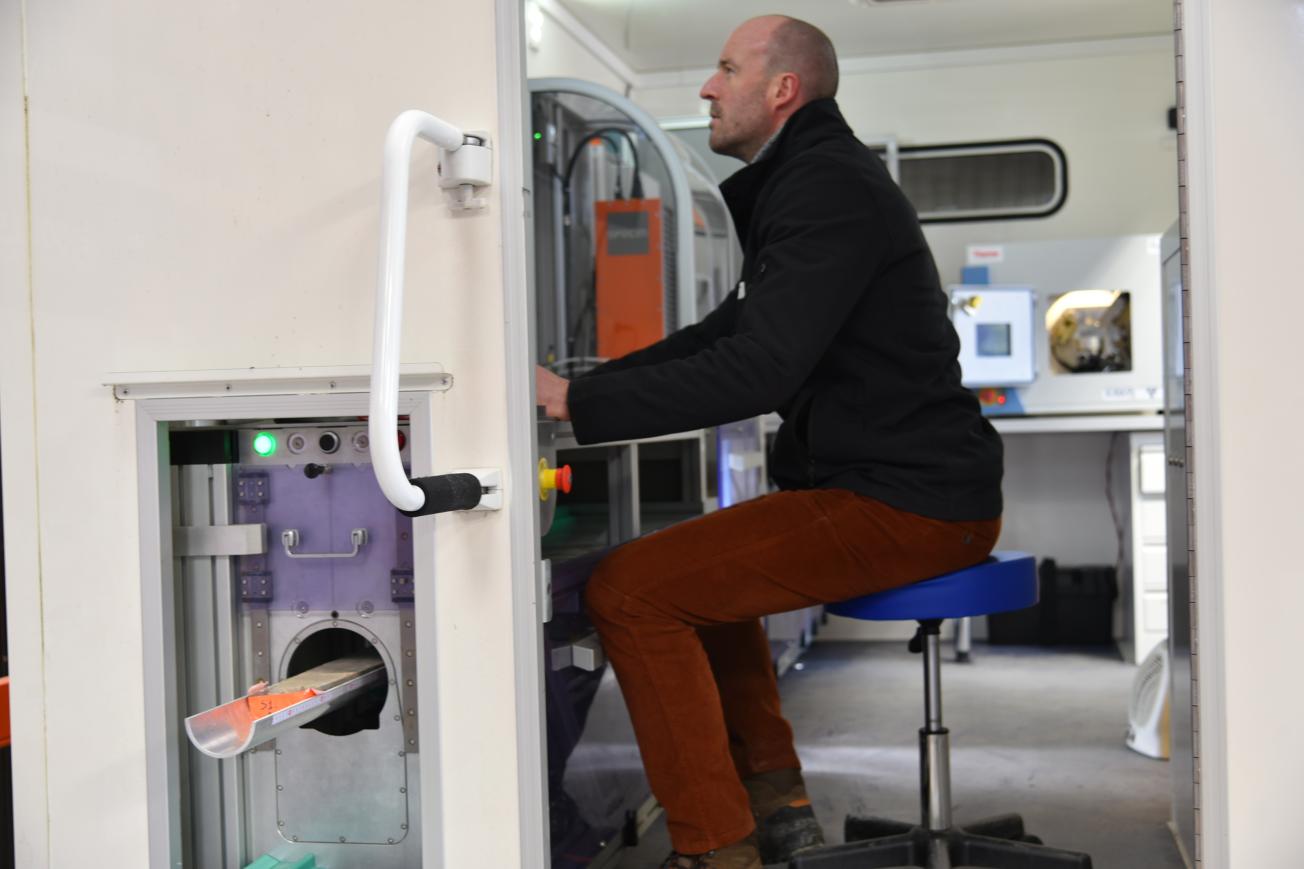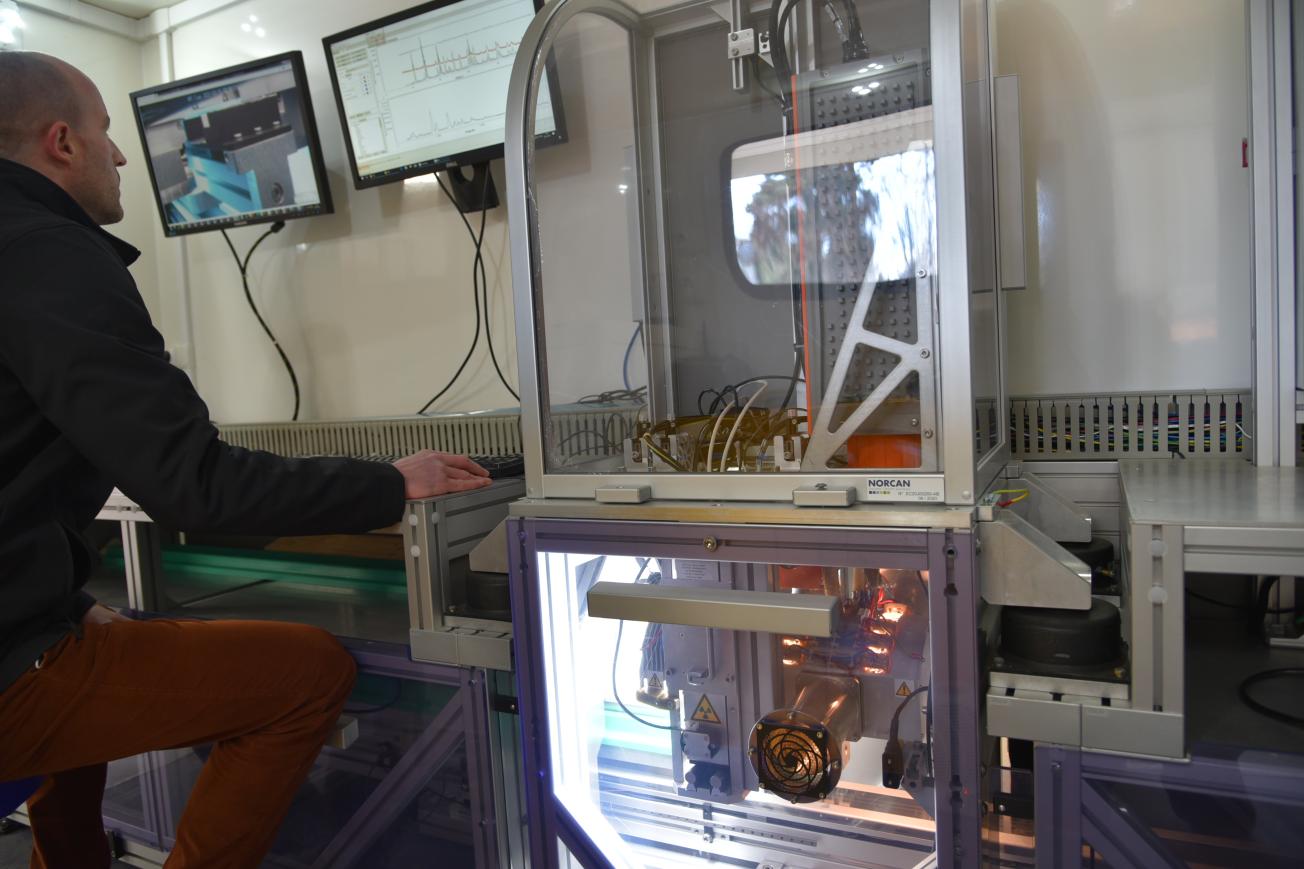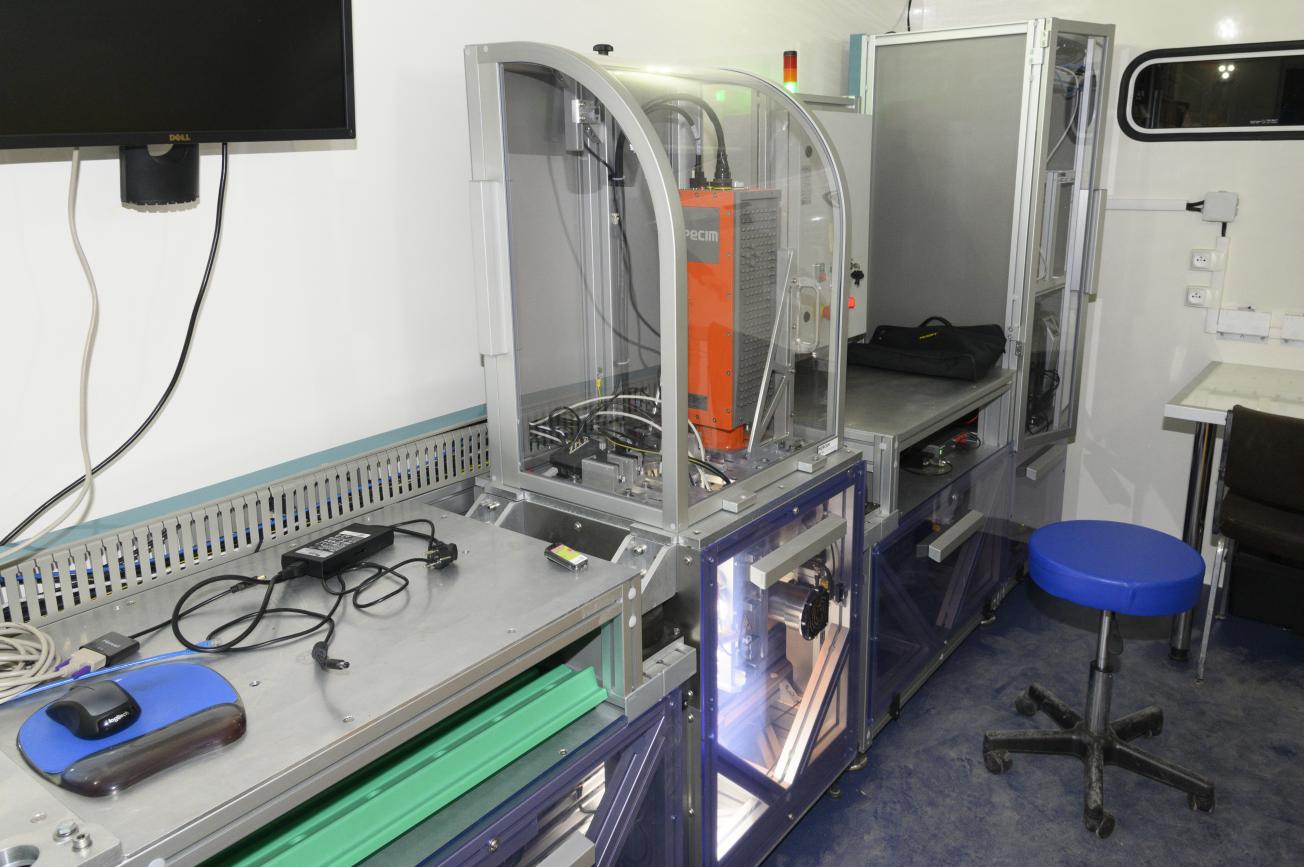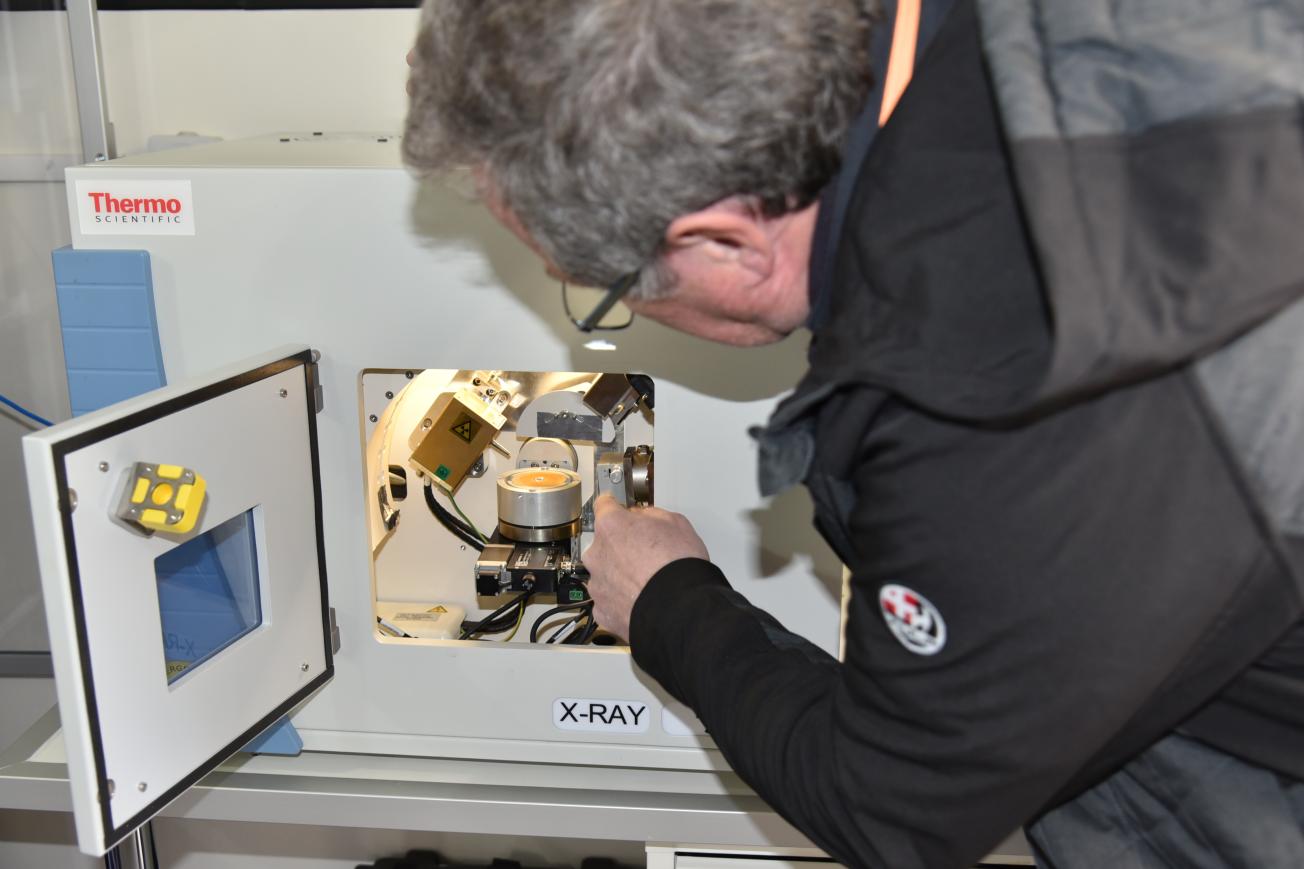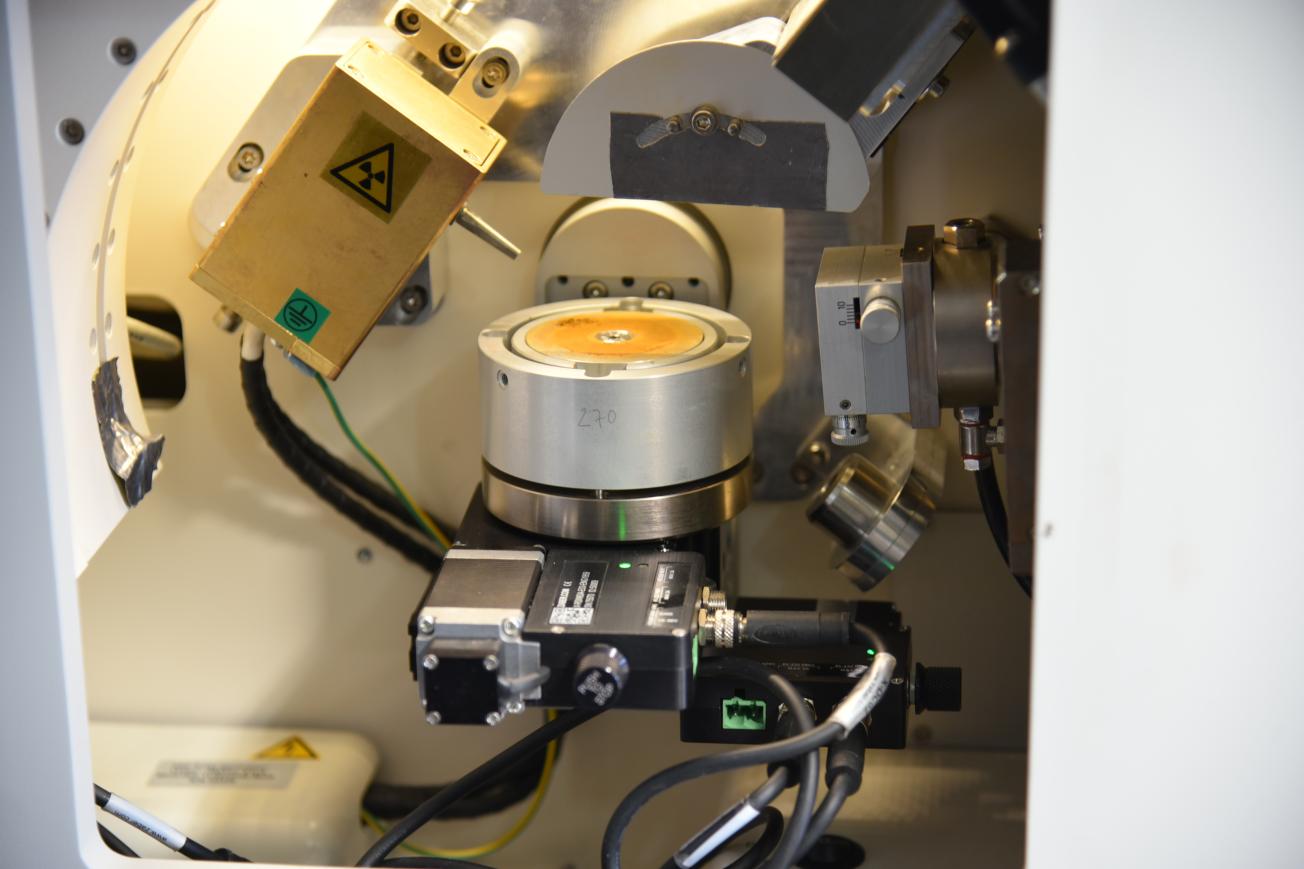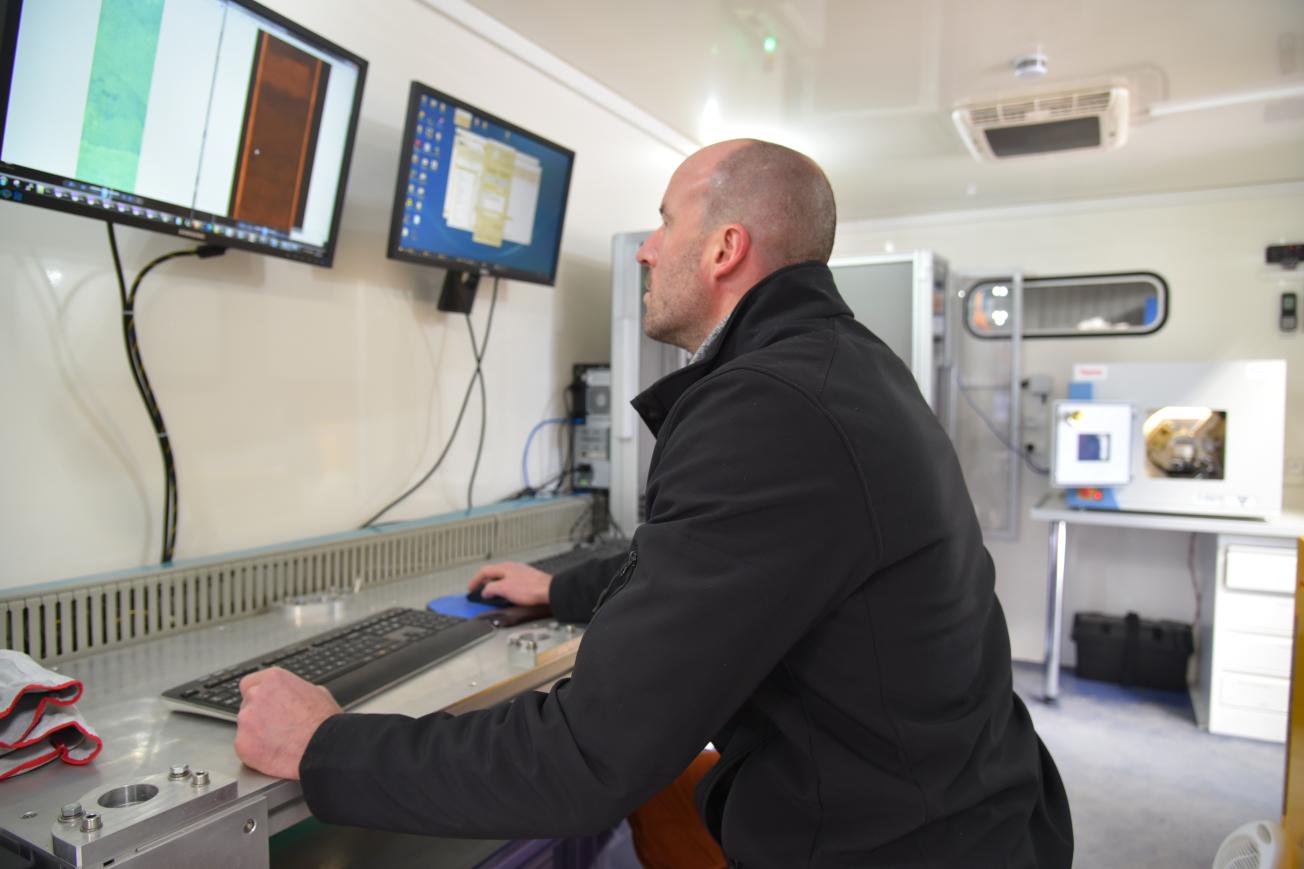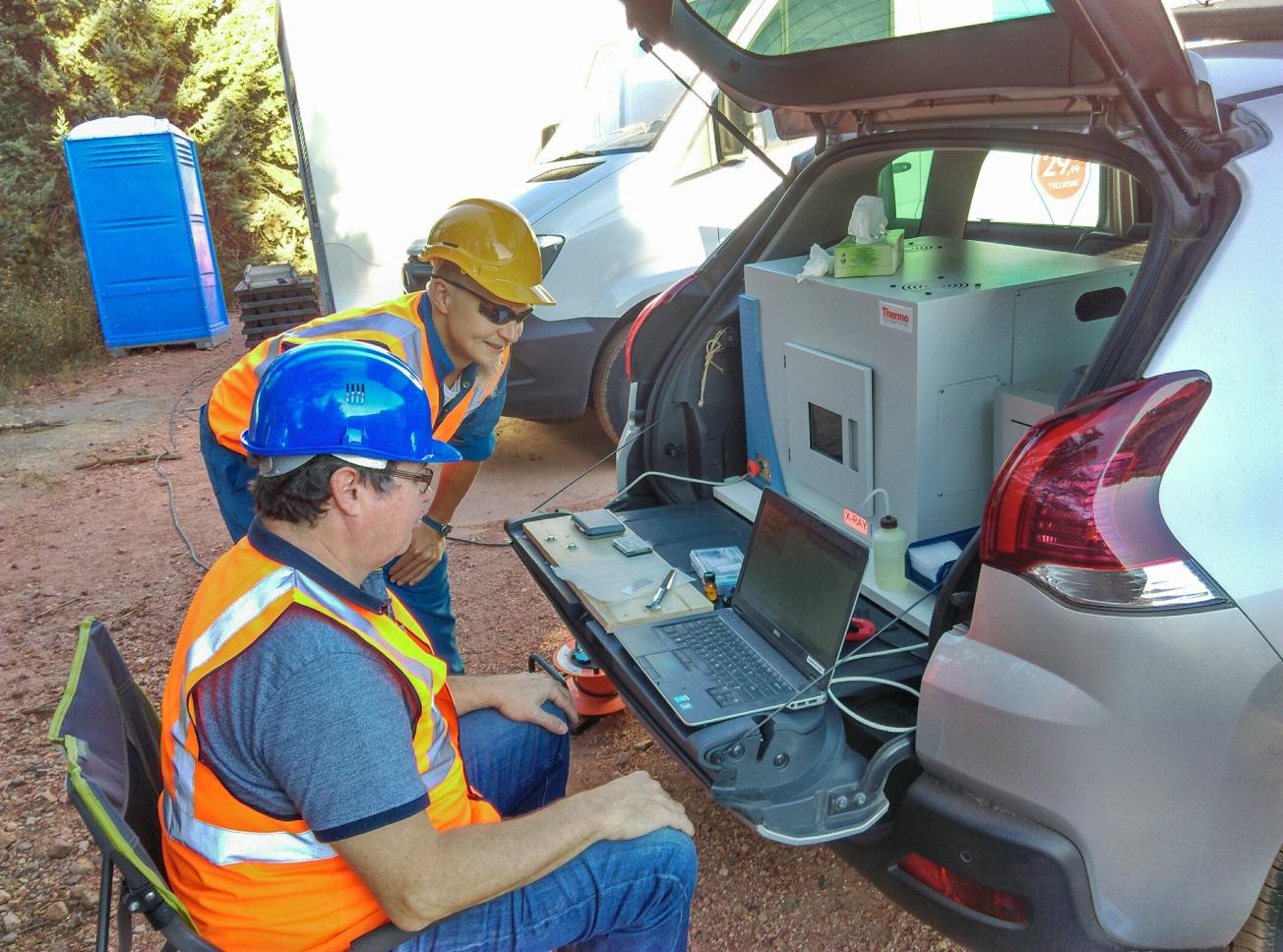The analytical equipment is designed to work together or independently, and can be combined on-site with the mobile sonic drill rig.
1. The ScanLab, a multi-sensor core scanner for morphological, chemical and mineralogical continuous analyses
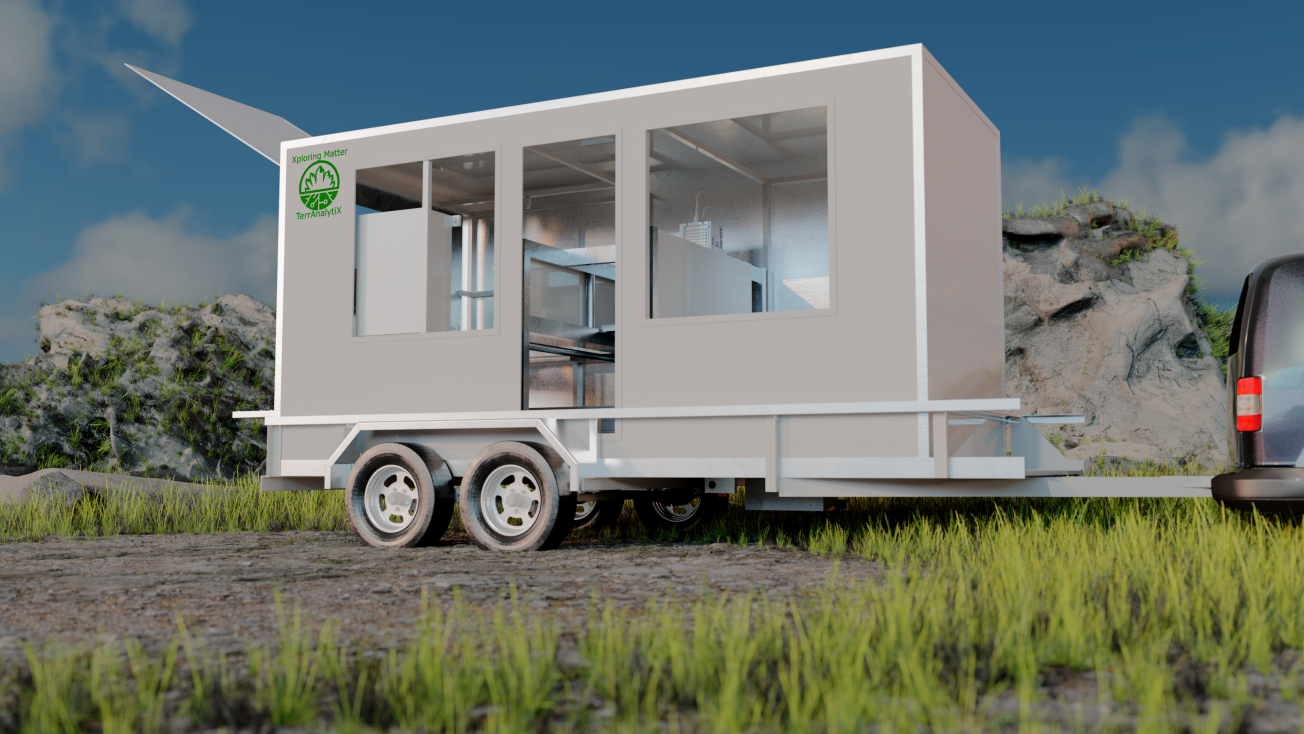
The TerrAnalytiX ScanLab
© Smidesang & Lyng
Detailed description
On-line, on-site and real-time core scanner for mineral, geochemical
and morphological characterization
The ScanLab combines for the first time non-destructive and fast profilometric, RGB, X-ray fluorescence and hyperspectral measurements to provide detailed morphological, geochemical and mineralogical information on uncut drill cores, lose or chip materials. Real-time data integration (data fusion) aquired from different sources into a unique metric referential forming a mega-file with a 30-μm highresolution delivers structured, reliable and ready-to-process data.
Automated processing and visualization of integrated data with a decision-making software based on pre-defined key geological features allow to identify the Regions Of Interest (ROIs) and to provide geologists real-time access to geological data.
Take a trip along the ScanLab core scanner conveyorbelt!
2. The VanLab, a compact XRD-XRF analyser for chemical and mineralgical discrete analyses
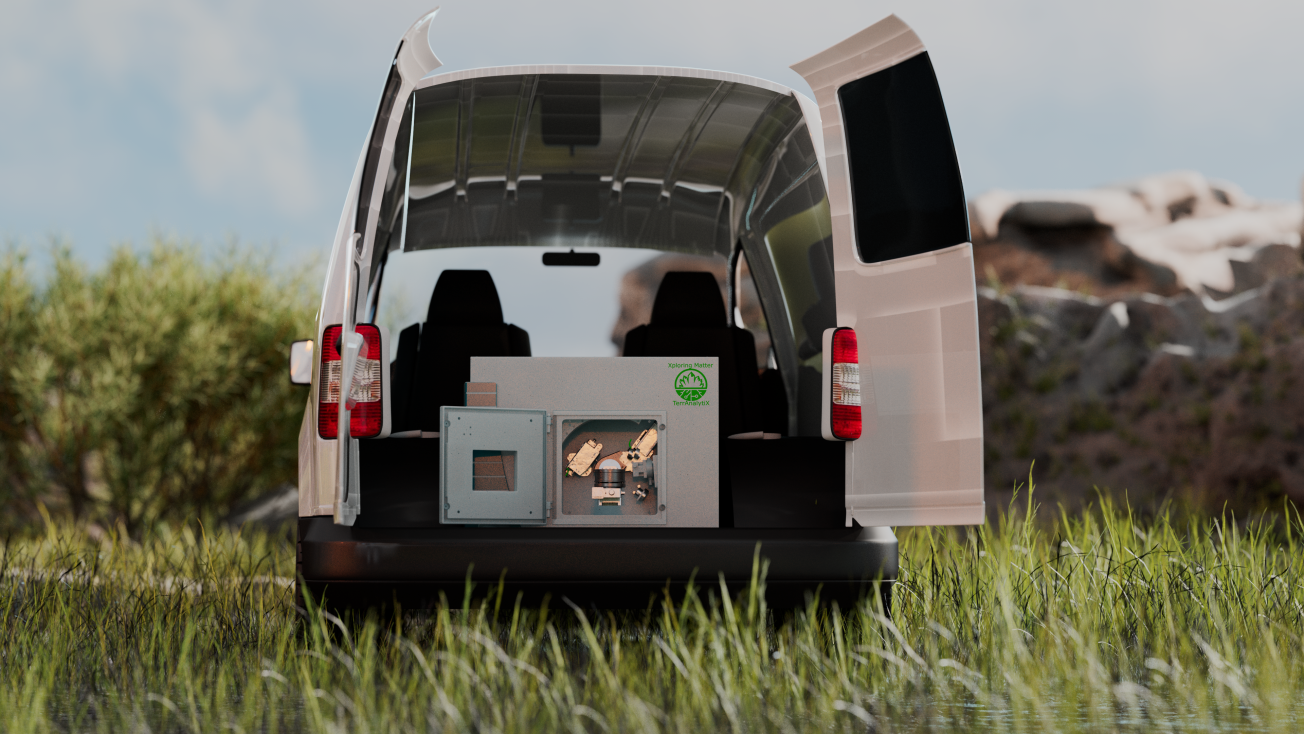
The TerrAnalytiX VanLab
© Smidesang & Lyng
Detailed description
On-site benchtop analyser for global chemical & mineralogical quantification
Fast data flow is achieved with two separated instruments sharing the same sample holder system and working in coordination and synergy: the Discrete Combined Analytical X-ray (DCAX) and Discrete Combined Analytical Raman (DCAR). The first is a combined XRD-XRF instrument for simultaneous acquisition and the second is a special Raman spectrometer.
The VanLab can be :
- coupled with the ScanLab and used to investigate more in-depth the Regions Of Interest (ROIs);
- deployed independently on-site for chemical and mineralogical characterization using combined XRF-XRD analyses.
In the first case, representative samples are extracted for analysis by XRD-XRF-Raman based on the results of the phase and elemental map obtained from core scanning, thus giving a quantitative more accurate analysis of the mineralogical and chemical content.
The data workflow is automated allowing data acquisition, processing and visualization in real-time (20 min/sample) without compromising accuracy. Even complex phases like clay minerals can be quantified accurately.
Together, the MODULAB brings 3 major strengths to answer your needs
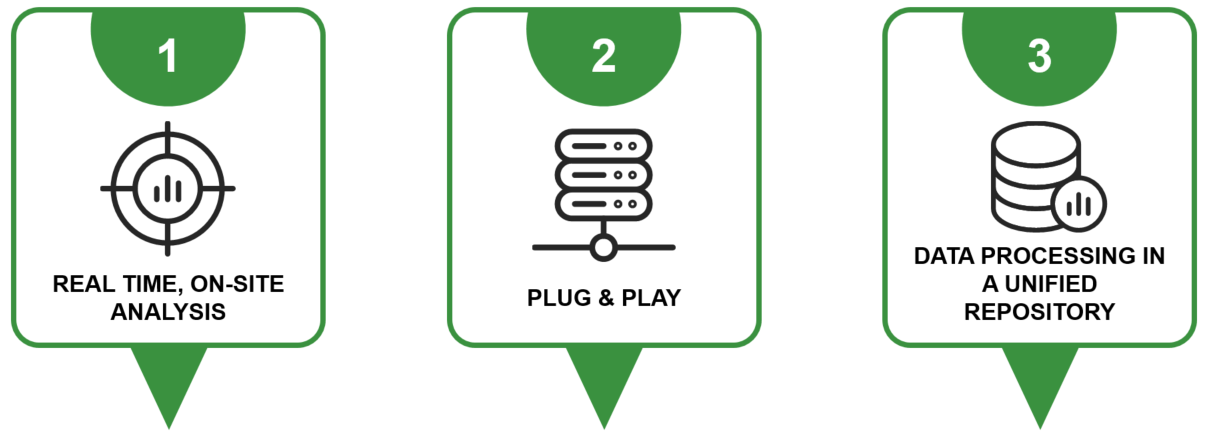
MODULAB 3 strengths
© SOLSA
1. Real-time, on-site analysis
- Autonomous instruments deployable in remote locations as well as in a factory or laboratory
- Average time between acquisition and visualization of results < 30 min (varies according to the number and type of sensors)
2. Plug & play
- Addition of high-tech sensors on demand
- Connection and automated calibration of sensors
3. Data processing in a unified repository
- Specialized mineralogical databases
- Decision-making software using innovative digital approaches (AI)
- Data accessible via a cloud
- Data compatible & interoperable with user data
Meet the Modulab and discover it's analytical capacities with our 360° Virtual Tour
Slide show of the MODULAB in action
For further information and tailored solutions

TerrAnalytiX
Saint-Denis-en-Val
45560 Centre-Val-de-Loire
France
